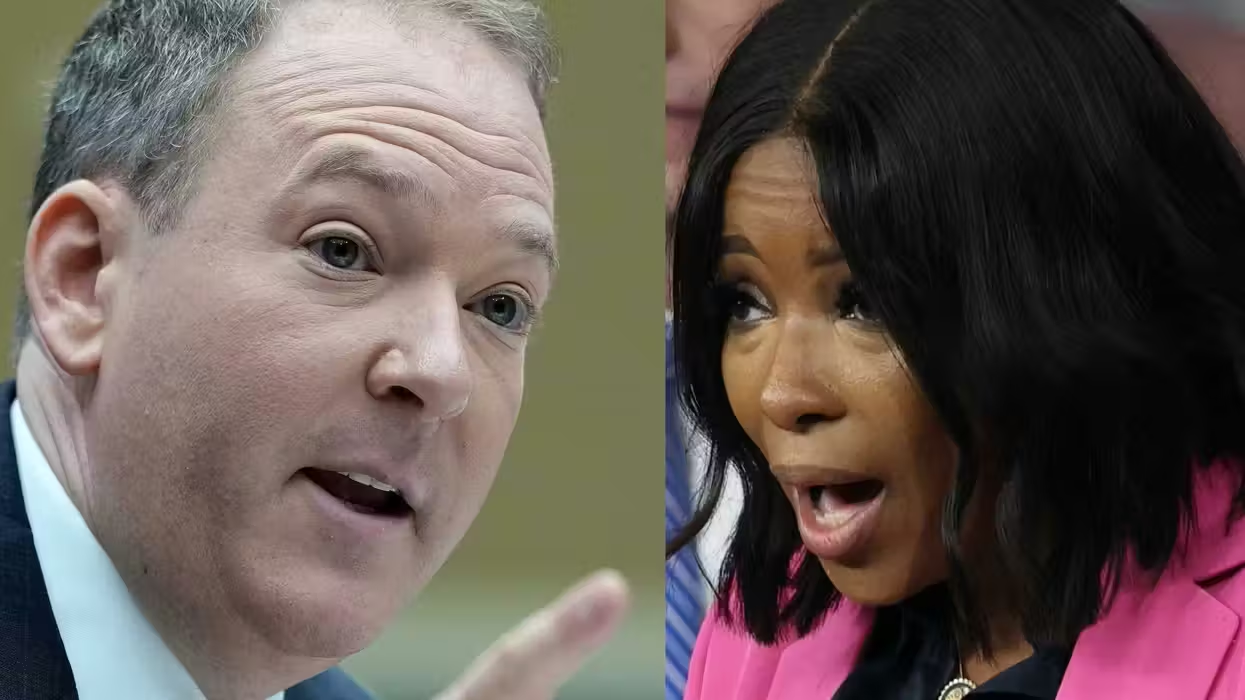
© 2025 Blaze Media LLC. All rights reserved.
" ... the Fed is no longer looking for data to justify further easing."

[Editor’s note: the following is an article by John Carney that originally appeared on CNBC.com]
The most talked about subject on Wall Street today is the question about whether the Federal Reserve will announce a new round of quantitative easing, or QE3.
More and more professional market watchers are predicting QE3. Goldman Sachs says the chances are greater than 50 percent. Barclays, UBS and JPMorgan are all predicting a new round of Fed asset buying.
The dissenters here are Nomura, the readers of Business Insider, and my old BI colleague Joe Weisenthal. I think Joe and Nomura are wrong -- but before getting into that, here are Joe's reasons for predicting no QE:
The economy still appears to be getting better. Citi's Economic Surprise Index has gone positive, and continues to rise.Unemployment fell to 8.1%. You might say this is meaningless, since it was a result of people leaving the workforce, but that doesn't change the fact that if the workforce is shrinking that rapidly, then the labor pool is marginally closer to full employment, thus creating inflation risk. The Fed might also wonder (as others have) whether the weak NFP number was the result of a bad seasonal adjustment, rather than an underlying reflection of the economy (other labor market indices were quite solid during the month).
Meanwhile, the ECB just did the #1 thing that was needed for the global economy by taking the tail risk off the table with its bond buying program. That's FAR more important and impactful than anything the Fed could do right now.
In the post Michael Woodford-era (Woodford being the economist who advocated NGDP targeting at the recent Jackson Hole conference), the Fed might feel as though a language change is the more robust move it can make.
The bar is probably high due to the electoral scrutiny. Easing in December will be much more palatable, and the Fed will also have more clarity as to how the Fiscal Cliff will be resolved.
Asset prices are at multi-year highs, and again, with the help of the ECB, financial conditions are quite easy.
So where does this analysis go wrong?
It assumes that the base case is No More Easing. Joe is basically looking for the recent data to provide a compelling case for further easing. That's also what Nomura is doing when it says that the data doesn't show job growth falling off the cliff.
The problem with this assumption is that we know that the base case is quite different. Here's what the Fed said in the August FOMC [The Federal Open Market Committee] minutes: "Many members judged that additional monetary accommodation would likely be warranted fairly soon unless incoming information pointed to a substantial and sustainable strengthening in the pace of the economic recovery."
In other words, the Fed is no longer looking for data to justify further easing. That was the story last spring. Now the Fed is checking the data to see if the data undermines the already established case for further monetary accommodation.
If you read the BI bullet points above through that lens, the situation changes altogether. Nothing in the data provides any reason to think that we have a "substantial and sustainable strengthening in the pace of the economic recovery."
So, as loathe as I am to agree with the Wall Street consensus, this time Wall Street is right. We're very likely to get a new round of QE tomorrow.
--
RELATED:
- Here's Why You Should Expect Fed QE3 Wednesday
- Last Call: Steve Wynn's Win
- The Fed’s ‘Talking Cure’
- Could the ECB Plan Backfire?
© 2012 CNBC.com, John Carney.
Want to leave a tip?
We answer to you. Help keep our content free of advertisers and big tech censorship by leaving a tip today.
Want to join the conversation?
Already a subscriber?
more stories
Sign up for the Blaze newsletter
By signing up, you agree to our Privacy Policy and Terms of Use, and agree to receive content that may sometimes include advertisements. You may opt out at any time.
Related Content
© 2025 Blaze Media LLC. All rights reserved.
Get the stories that matter most delivered directly to your inbox.
By signing up, you agree to our Privacy Policy and Terms of Use, and agree to receive content that may sometimes include advertisements. You may opt out at any time.





